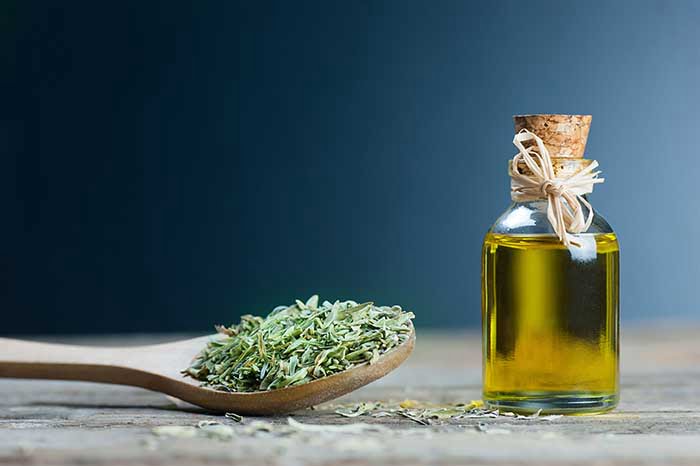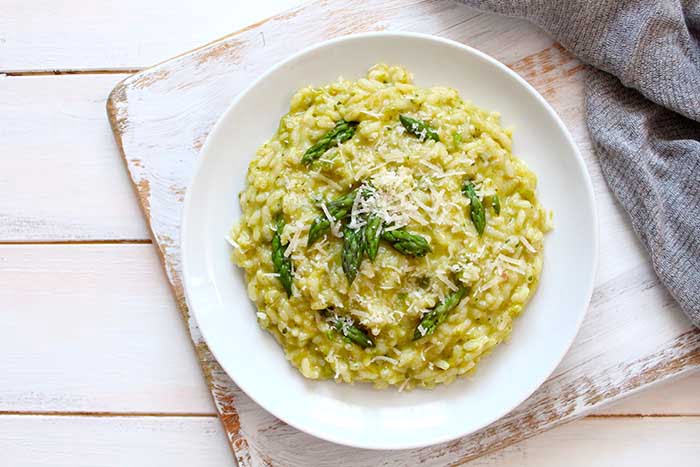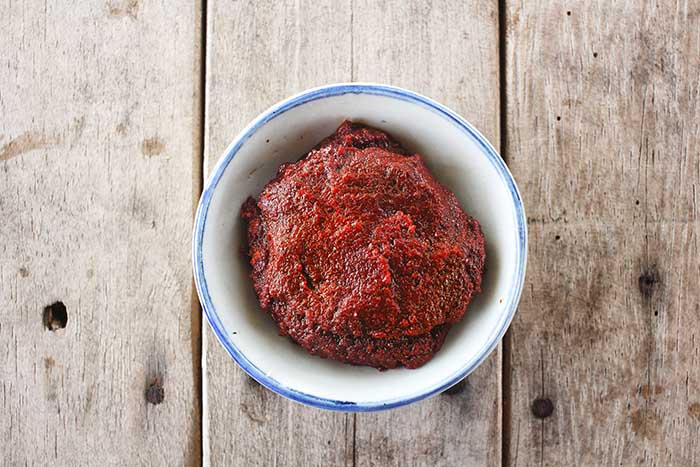Cut the perfect batch of green onions for cooking. From slices to strips, find out everything you need to know about perfect ingredient preparation.
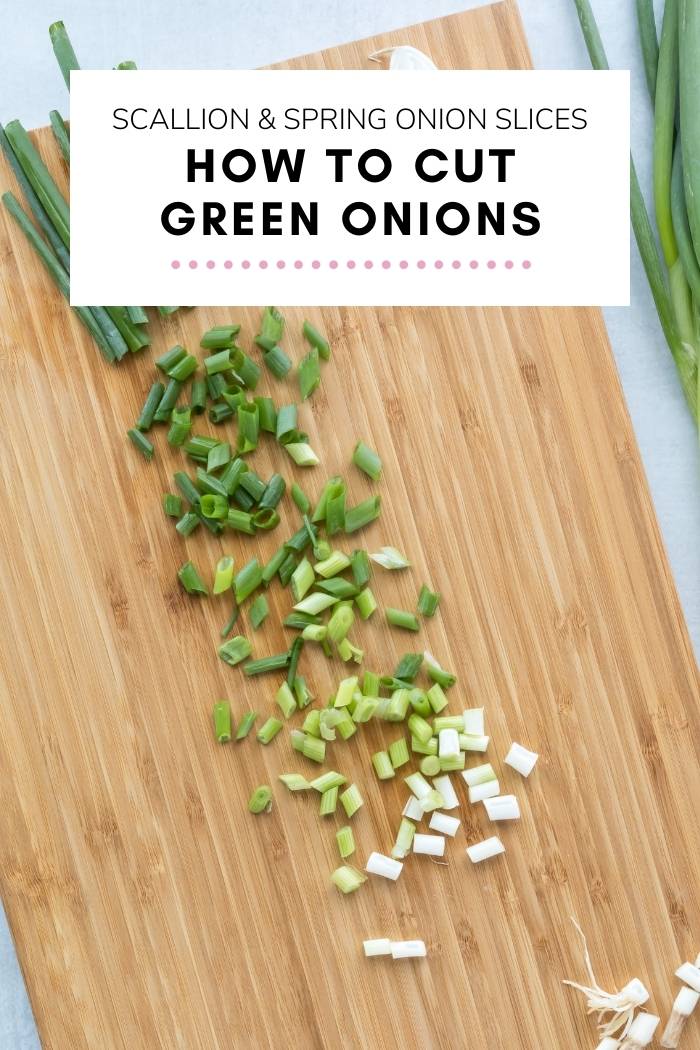
- Which Part of the Green Onion Do You Use in Cooking?
- How to Cut Green Onions for Garnish
- How to Make Green Onion Curls
- How to Cut Green Onions for Stir-Fry
- How to Cut Green Onions for Sushi
- Slices
- Long Strips
- Large Chunks
- Are Chives and Green Onions The Same?
- Scallions vs. Green Onions: What's the Difference?
- How to Use Different Parts of Green Onions
- Storage
- Recipes Featuring Sliced Green Onions
When a recipe calls for green onions, what’s the best way to prepare them? If you’re told to cut them, does that mean cut lengthways? Sliced into thin discs? Or just shaped into uneven cubes?
Our guide looks at how different chopping methods can impact the overall flavor of your dish and why different recipes call for particular approaches to green onion prep. Let’s get into it.
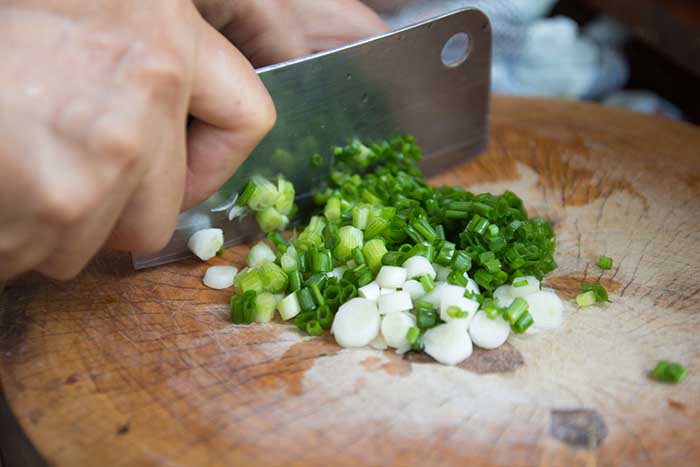
Which Part of the Green Onion Do You Use in Cooking?
Green onions have two parts: the white bulb just above the root and the dark green leaves.
The white and pale green bulb is most commonly used in cooking. You can use this part of the vegetable as you would any other onion.
Even though the leaves are not used as often, you can still use this part of the plant as garnish if you don’t want to waste food.
How to Cut Green Onions for Garnish
Green onions make a great, flavorful garnish for soups and other dishes.
First, gather the green onions together in an even bunch. You want to make sure that the ends all line up.
Then, cut thin rounds that are about 1/8 inch thick. Start from the leaves as this is the part most commonly used as a garnish, but you can also use the bulb.
There are a few other cuts that you can use to make a garnish, but this is one of the easiest.
How to Make Green Onion Curls
If you want to use your green onions to make a fancier garnish, then you can try to make green onion curls.
First, gather the green onions into a bunch. Cut the tops off of the leaves as they tend to be frayed and not as attractive for a garnish.
Then, cut the rest of the leaves on a bias (a bias cut is when your knife is on a slight diagonal). You want to get long, thin strips of green onions, so make sure that you are chopping vertically, not horizontally.
Once you have your long, curved strips of green onions, place them in a bath of ice water. Leave the green onions to soak for three to four minutes and they will form a natural curl.
How to Cut Green Onions for Stir-Fry
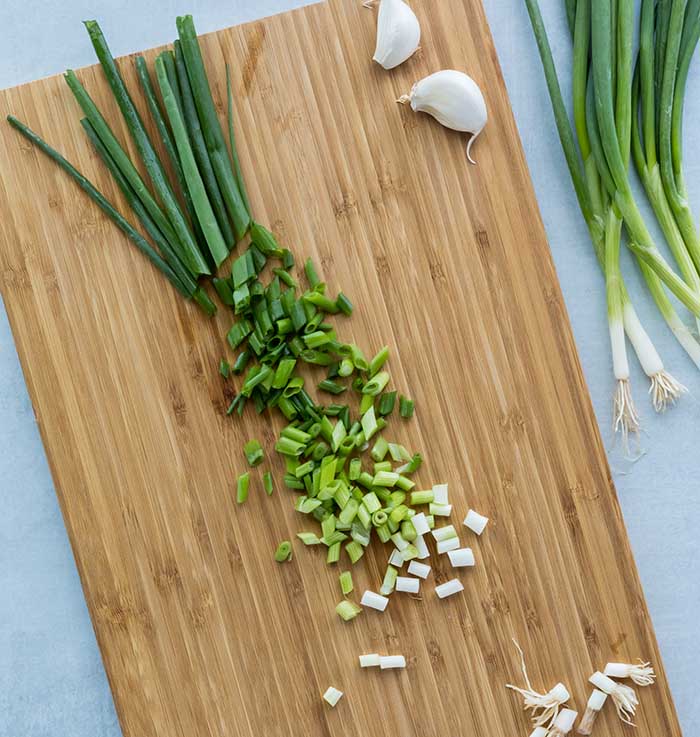
When you’re cutting a green onion for a stir-fry, you want to get thicker pieces than when you are cutting for a garnish, which is why the technique is different. You will also be using a different part of the onion—the bulb instead of the leaves.
First, prepare the green onions by washing them and cutting the roots off (you don’t want to eat the stringy roots).
Then, cut each onion into tubes that are about 1/4 to 1/2 inch long. You can cut straight across the green onion horizontally or at a slight diagonal to make fun shapes. These pieces are longer, so they hold up to the robust cooking method of a stir-fry better than thin discs that you would use as a garnish.
How to Cut Green Onions for Sushi
If you’re making your own sushi rolls, you can add slices of green onions to punch up the flavor.
First, wash the onions, then trim off any wilted parts. You can get rid of the very top as that is often wilted.
Then, gather the onions together and cut horizontally to get round slices. You can slice them a little thicker than you would for a garnish, about 1/4-inch thick.
Slices
When a recipe calls for slices, you want thin to prepare small, cylindrical-shaped slices of onion. This is perhaps the most common form of green onion and should be your default unless instructed otherwise.
To prepare them, you will need a cutting board, a sharp chef’s knife, and a small bowl of cold water.
Before cutting, rinse the green onions in the cold water. Pull off any leaves that look wilted or yellow, or anything that doesn’t look fresh enough to eat.
Shake the green onions to dry before lining them up on your chopping board, all pointing in the same direction in a single uniform layer. Cut off the tips at the root or bulb end, as well as the tips at the green ends. Discard these ends into the garbage bin.
In straight lines perpendicular to the direction of vegetables, cut the onions into thin slices. For maximum efficiency, do this with all the onions still facing the same direction, bunched together on the chopping board.
Once sliced, the onions are ready to be used immediately either for cooking or for garnish.
Long Strips
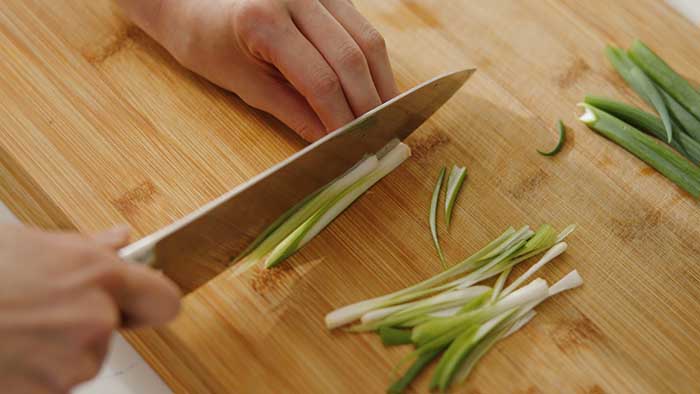
This method doesn’t differ too much from slices, with the main difference being the direction in which we cut our ingredients. It does require a bit more focus and will need to be done one by one, so will take longer than the slice method above.
Rinse the vegetables and remove any wilted leaves. Shake to dry or leave on a rack to air dry naturally. Cut off the ends and leaf tips as before, about ¼-inch from each end.
One at a time, place one green onion shoot on the chopping board. With the sharp pointed end of a chef’s knife, cut each onion lengthways into strips. As you finish each one, place each strip into an ice-filled bowl before putting the entire batch in the refrigerator. This will keep them fresh until ready to use them. When they are put back in the refrigerator, they quickly become crisp again and stay that way.
Large Chunks
Clean the onions, making sure they have no wilted leaves or dirt, and cut off the tops and roots. About ¼-inch from each side. Lay the onion out in a single layer on a cutting board.
Using a mezzaluna this time (like this one on Amazon – Note: affiliate link), chop the onions in a back and forth motion to create roughly shaped large pieces. Try to use the light green and white ends only and not the dark green ends.
Are Chives and Green Onions The Same?
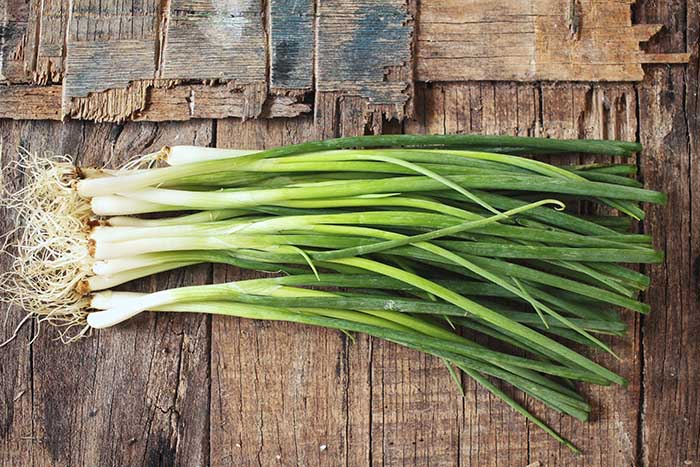
Despite looking similar, chives and green onions are markedly different in flavor and use. Yes, they might both have white bulbs and green stalks, along with leeks, shallots, and scallions in their vegetable family, but they can not be used interchangeably.
Chives have a more robust flavor, making them an excellent addition to salads, mashed potato, and cheese dipping sauces. Because chives are so robust and pronounced in taste, you can only use part of the chive.
Thankfully, they’re easy to tell apart. Green onions have a thicker stalk while chives have grass-like blades on top.
Scallions vs. Green Onions: What’s the Difference?
Scallions and green onions are both from the same vegetable family (the Allium cepa), with both being onions that don’t feature a fully-developed bulb. Not only that, they both look and taste remarkably similar.
Green onions do have a slightly stronger taste when harvested earlier in the year, but otherwise the two vegetables can be used interchangeably.
How to Use Different Parts of Green Onions
Shoots and stalks
When raw, the shoots and stalks have a strong flavor that’s great for dips and garnish. Cut them into small slices and add to your favorite guacamole recipe, salsa, salad, or dips. Their small and unimposing size also makes them a delicious garnish for soup.
Blossoms
The blossoms can also be used raw in salads, and are pretty enough to add some visual wow-factor to your dish. The flavor is milder than the stalks, so is delicate enough to balance with light dishes.
Storage
Place the onions in a large mason jar and pour in cold water, just covering the roots. Cover the jar lid of plastic wrap, and swap in fresh water every couple of days. Alternatively, you can wrap the onion ends with a damp towel to keep the roots moist.
Recipes Featuring Sliced Green Onions
One of the popular ways of using green onions is to slice them and sprinkle them over creamy soup as a garnish. The creamy soup is white and as such, adding the green stalks to the soup adds a pop of color will add brightness to the dish and zing. Start by making the soup. Then add as garnish when you are done.
You can also use large pieces of green onion in stir-fries, such as Szechuan chicken.

